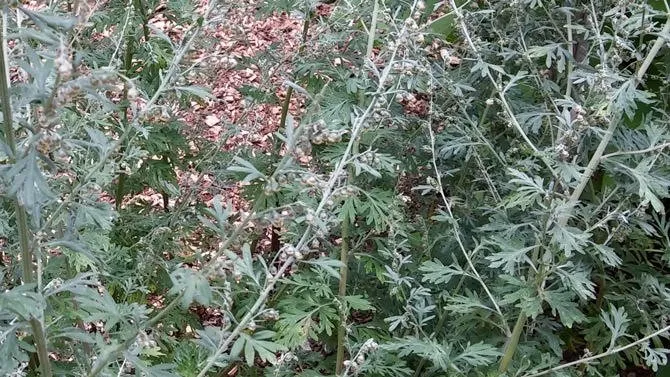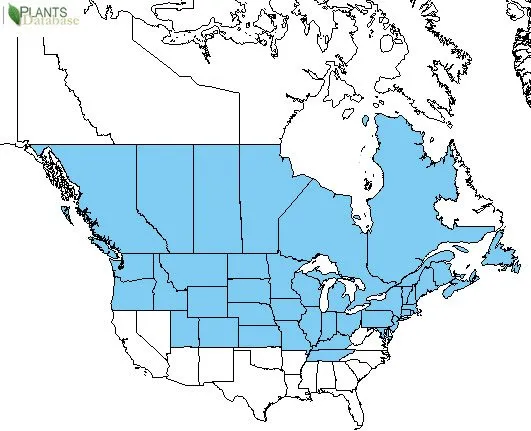Stimulating creativity, giving rise to big ideas and sparking the imagination, absinth liquor is the drink of painters and poets, who abused it to the point of delirium. Prohibited in France in the an attempt to curb alcoholism, it is mostly dangerous when taken in excessive large quantities. Moderate consumption only produces mild euphoria, but even that may cause nervous disorders, convulsions and insomnia.

Photo by @krnel
Absinthe is also commonly known as wormwood. The scientific botanical name is Artemisia absinthium. Other names include Absinth, Absinthe Suisse, Absinthii Herba, Absinthites, Absinthium, Afsantin, Ajenjo, Alvine, Armoise, Armoise Absinthe, Armoise Amère, Armoise Commune, Armoise Vulgaire, Artesian Absinthium, Artemisia absinthium, Common Wormwood, Grande Absinthe, Green Fairy, Green Ginger, Herba Artemisae, Herbe aux Vers, Herbe d'Absinthe, Herbe Sainte, Indhana, Lapsent, Madderwort, Menu Alvine, Qing Hao, Vilayati Afsanteen, Wermut, Wermutkraut, Western Wormwood, Wurmkraut.

wikimedia, CC BY-SA 3.0
Key Points
- famous for stimulating imagination in artists
- downside of leading to delirium with long term use
- toxic and dangerous in high doses
- low edibility
History
The name Artemisia comes from Artemis, the Greek goddess of chastity and childbirth, as well as a the goddess of hunt, protector of the forest and children. The second part, absinthium, which is the original name, comes from the Greek word absinthion which means undrinkable, referring to it's bitter taste. The German wermut is the name for the alcohol vermouth which is made from the plant.
The name wormwood comes from the Middle ENglish wormwode or wermode, and Old English wermod.
Folklore says that wormwood came from "the trail of the devil as he left the Garden of Eden".
Where is it found?
Absinthe is native to temperate regions of Europe and northern Africa. It's been naturalized into most of Canada and the USA.
It can be found in waste lands, and growing in rocks and screes.
What's it used for?
Absinthe is not very edible at all. It's bitter taste is sometime used as a flavoring.
Oil is made from the above ground parts of the plant. It can be used to treat various digestion problems such as loss of appetite, upset stomach, gall bladder disease, intestinal spasms, Crohn's disease and a kidney disorder called IgA nephropathy, as well as fever, liver disease, depression, muscle pain, memory loss and worm infections; to increase sexual desire; as a tonic; and to stimulate sweating. It's also used to increase sexual desire and stimulate imagination.
Applied to the skin, some use it for osteoarthritis , healing wounds and insect bites. The fragrance is used in cosmetics, soaps, perfumes and insecticides.
The most famous use is probably in making alcohol. Vermouth is a wine that's flavored with absinthe, and absinthe is the alcohol made with the plant which has an emerald green color. Absinthe is flavored with the herbs anise and fennel. It has a unique taste that most dislike.
Famous artists and writers have popularized the drink, such as Toulouse-Lautrec, Degas, Manet, van Gogh, Picasso, Hemingway, and Oscar Wilde. This is why it's know for sparking imagination and helping with ideas, despite it's downside of toxicity which leads to delirium.
Are there any risks?
Small oral amounts are safe, as well as when applied to the skin. Absinthe/wormwood that has thujone can cause seizures, muscle breakdown (rhabdomyolysis), kidney failure, restlessness, difficulty sleeping, nightmares, vomiting, stomach cramps, dizziness, tremors, changes in heart rate, urine retention, thirst, numbness of arms and legs, paralysis, and death. On the skin, it can cause severe skin redness and burning.
Thujone might also affect the uterus and endanger pregnancy, so avoid absinthe when pregnant. Breast-feeding women should also avoid.
Those allergic to the Asteraceae/Compositae family of plants should avoid, this includes plants like ragweed, chrysanthemums, marigolds, daisies, and many others. Those with a medical condition called porphyria can have their condition worsen as thujone can increase the production of porphyrin chemicals. Those with kidney problems should also avoid, as well as people with a history of seizures or epilepsy.
References:
Previous posts on Getting to Know Herbs:
Nettle | Peppermint | Dandelion | Feverfew | Lemon Balm | Hawthorn | Chickweed | Northern Bayberry | Lady's Mantle | Hyssop | Burdock | Catnip | Lavender | Yarrow | Marshmallow | Skullcap | Codonopsis (Poor Man's Ginseng) | Schisandra | Rhodiola | Canadian Goldenrod | German Chamomile | Blue Vervain | Blessed or Holy Thistle | Common Horehound | Cayenne | Ashwagandha | Gotu Kola | Common Verbana/Vervain | Holy Basil | Sweet Annie | Globe Artichoke | Butterfly Weed / Pleurisy Root | Joe-Pye Weed / Gravel Root | Valerian | Malva/Mallow | Boneset | Elecampane | Lungwort | Cramp Bark | Motherwort | Common Plantain | Eleuthero (Siberian ginseng) | Black Cohosh | Common Bearberry | Mahonia Mountain Grape (Oregon Grape) | Blue Cohosh | Goldenseal
Thank you for your time and attention. Peace.
If you appreciate and value the content, please consider: Upvoting, Sharing or Reblogging below.
 me for more content to come!
me for more content to come!
My goal is to share knowledge, truth and moral understanding in order to help change the world for the better. If you appreciate and value what I do, please consider supporting me as a Steem Witness by voting for me at the bottom of the Witness page.

